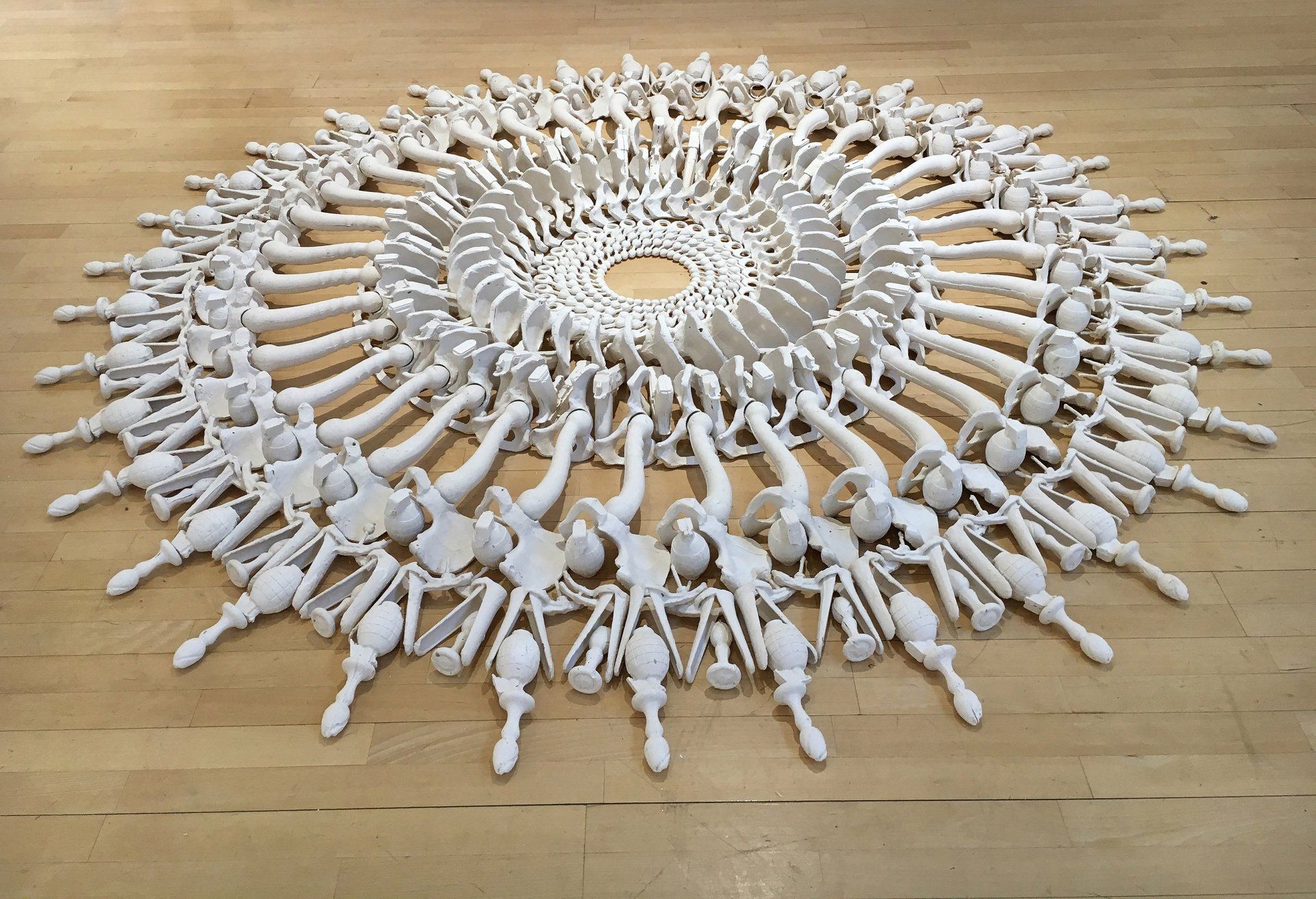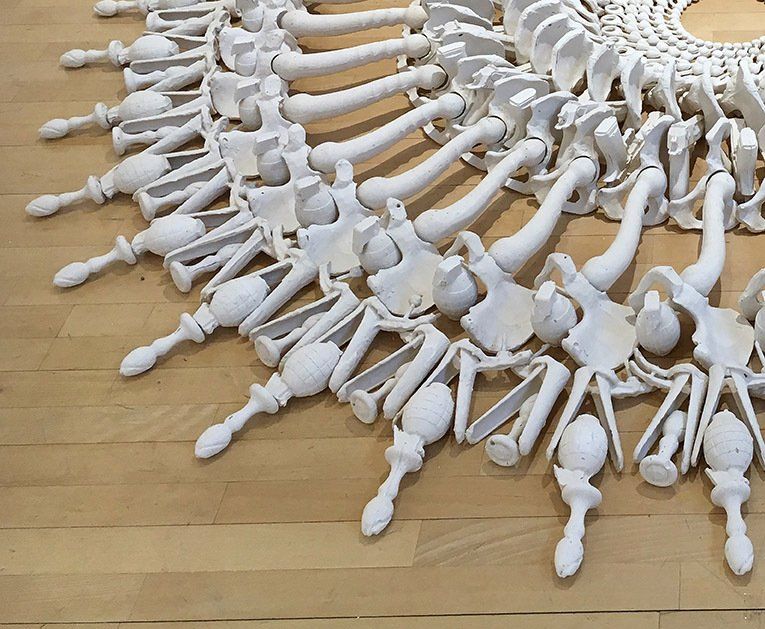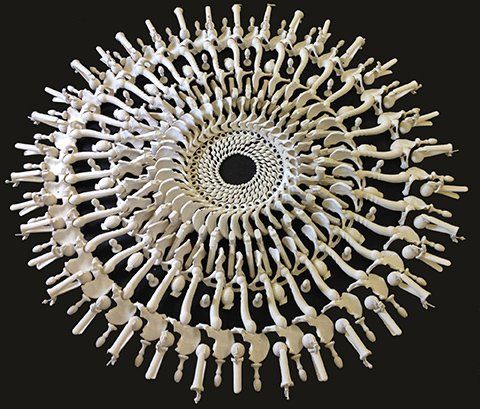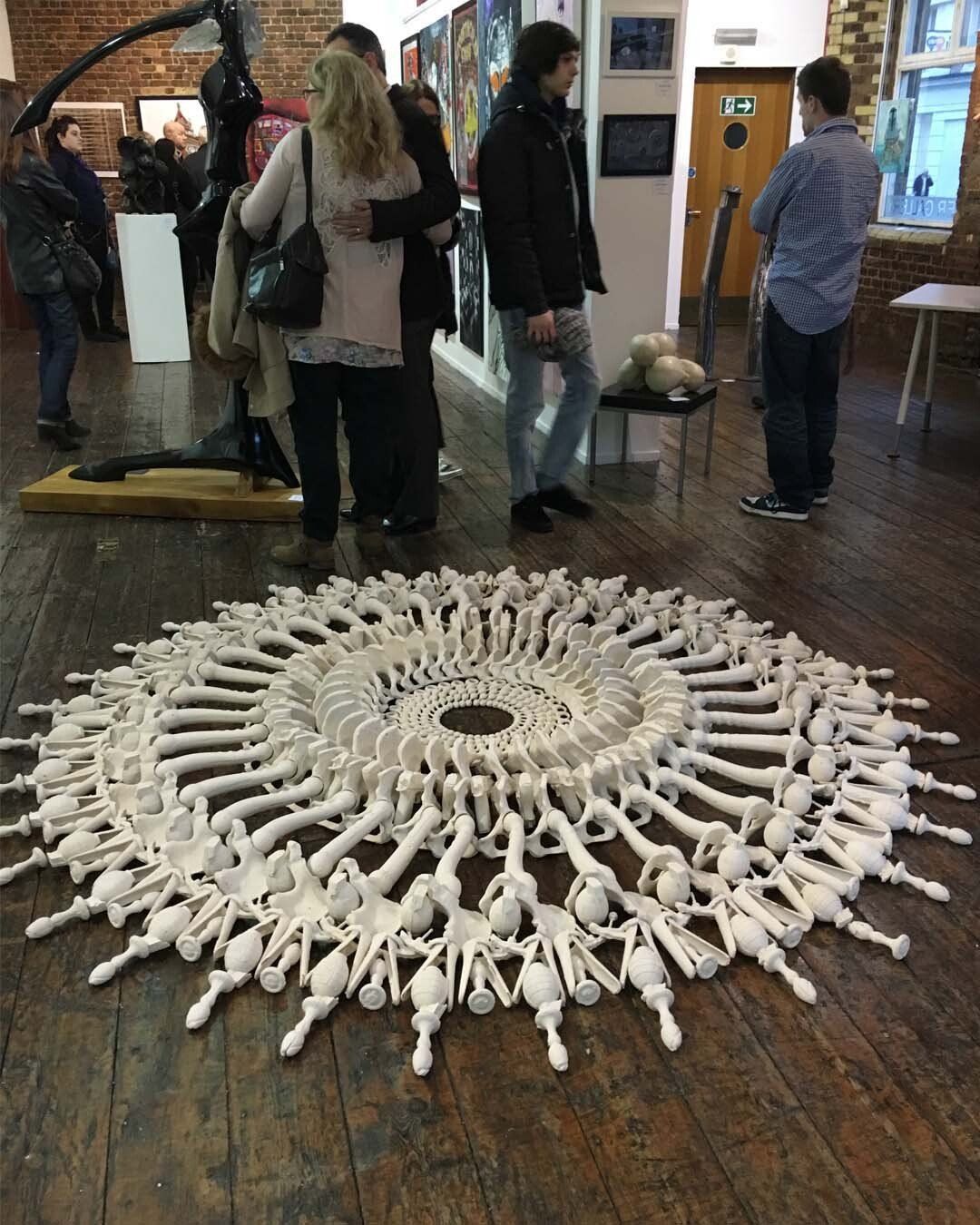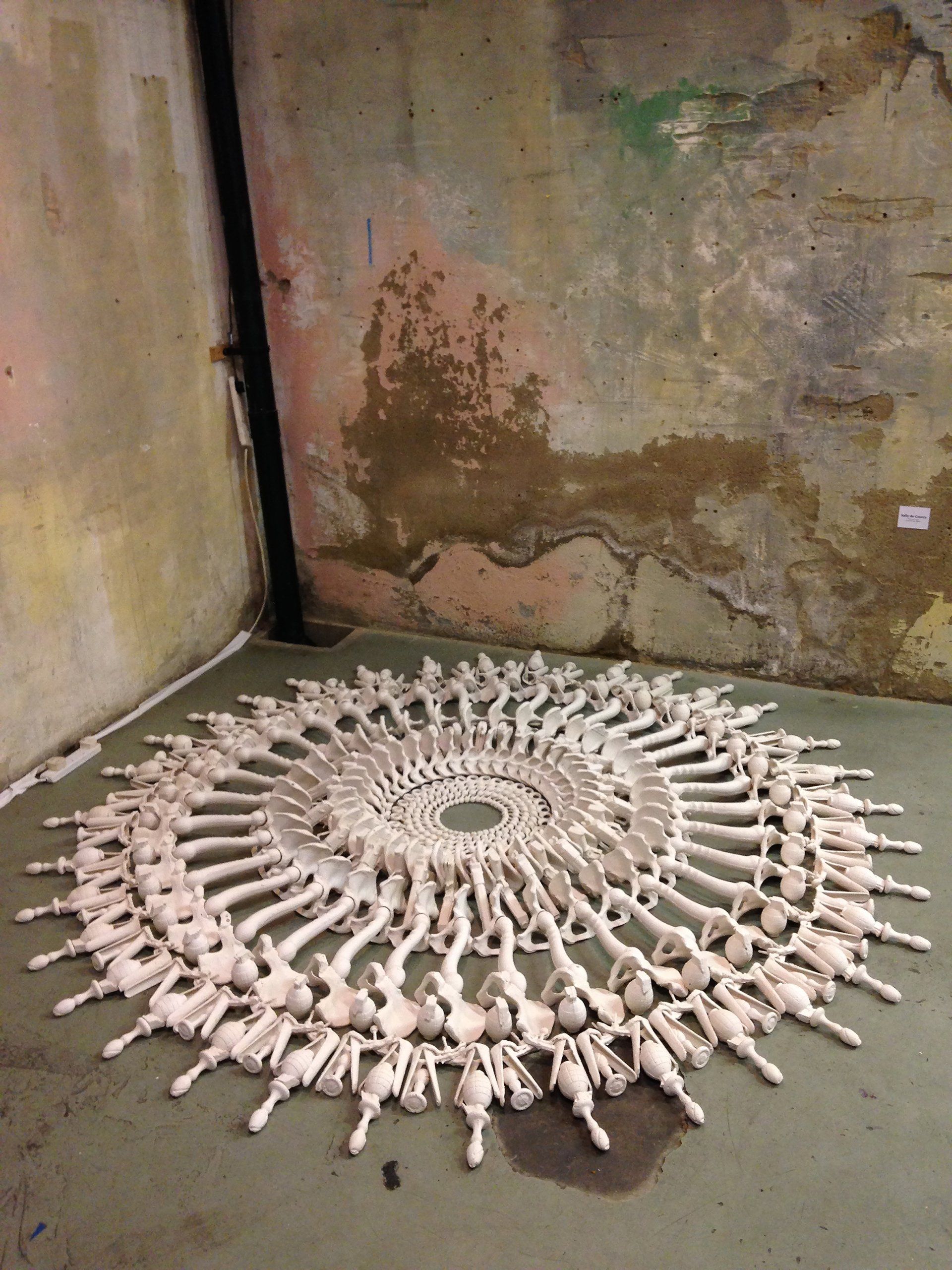PRECARIOUS LIVES
2015
Precarious lives uses a pelvic bone to bridge the artists's past medical experiences in Thailand at Khao- I- Dang refugee camp after Pol Pot's brutal regime and Patpong the red light district in Bangkok. The pelvis is penetrated in sex but also reveals itself in death.
There is a conflict between the pleasurable objectification that can occur in loving sex and the repugnant brutality of sexual abuse and exploitation, the difference is agency.
The refugee camp also drew attention to objectification and agency. Genocide, murder is the ultimate objectification of people. In death we are reduced to flesh and bone - a carcass. In time all that is left the only visible memory of what was once a thinking loving person is bone.
Detail Precarious Lives. Jesmonite 250cm diameter
In Precarious Lives objects are petrified to resemble bone. Bones were the first human tools. Making these objects into remains objectifies them in the same way that we are objectified in death. One could argue that guns, grenades, and sex toys are already objects but by rendering into bone it creates a level playing field of traces, memory and loss.It is arranged as an ironic Mandala
Below,
Precarious Lives
Mandala art is ancient - more than 2,000 years old. It is found in many cultures and used in many different Religious practices. Mandalas create a safe place to pursue deeper feelings and explore complex patterns of our identity enabling us to retrieve lost or broken pieces to make us complete. A Mandala represents the connection between our deep inner self and our outer world, which exist simultaneously. Mandalas symbolically represent life and its constant cycles.
The use of the Mandala in
Precarious Lives is ironic - it is used to reflect the repeated cycle of genocide throughout history and despite the United Nations treaty No.1021 in1948, it
continues today. This is represented below with a broken mandala and above in the animation.
